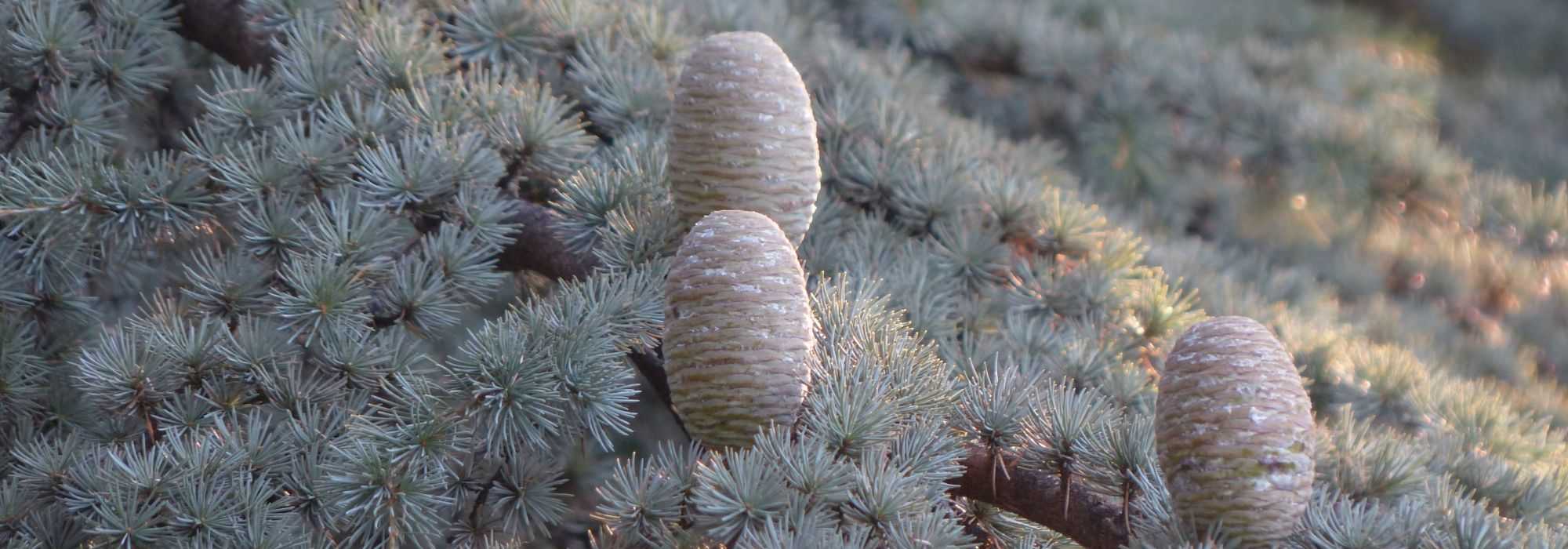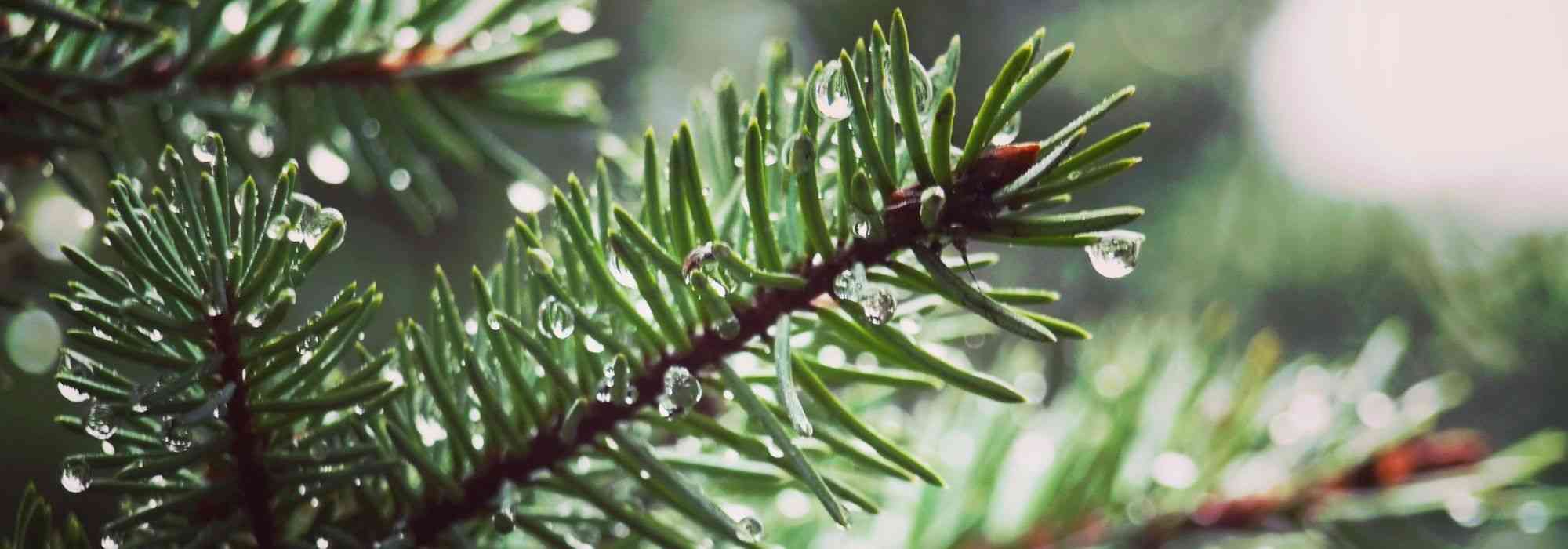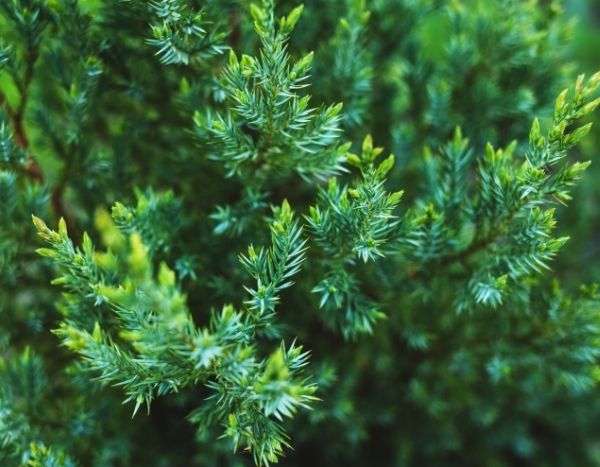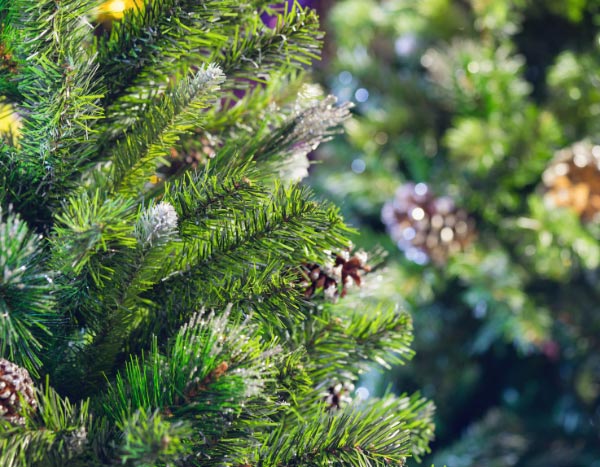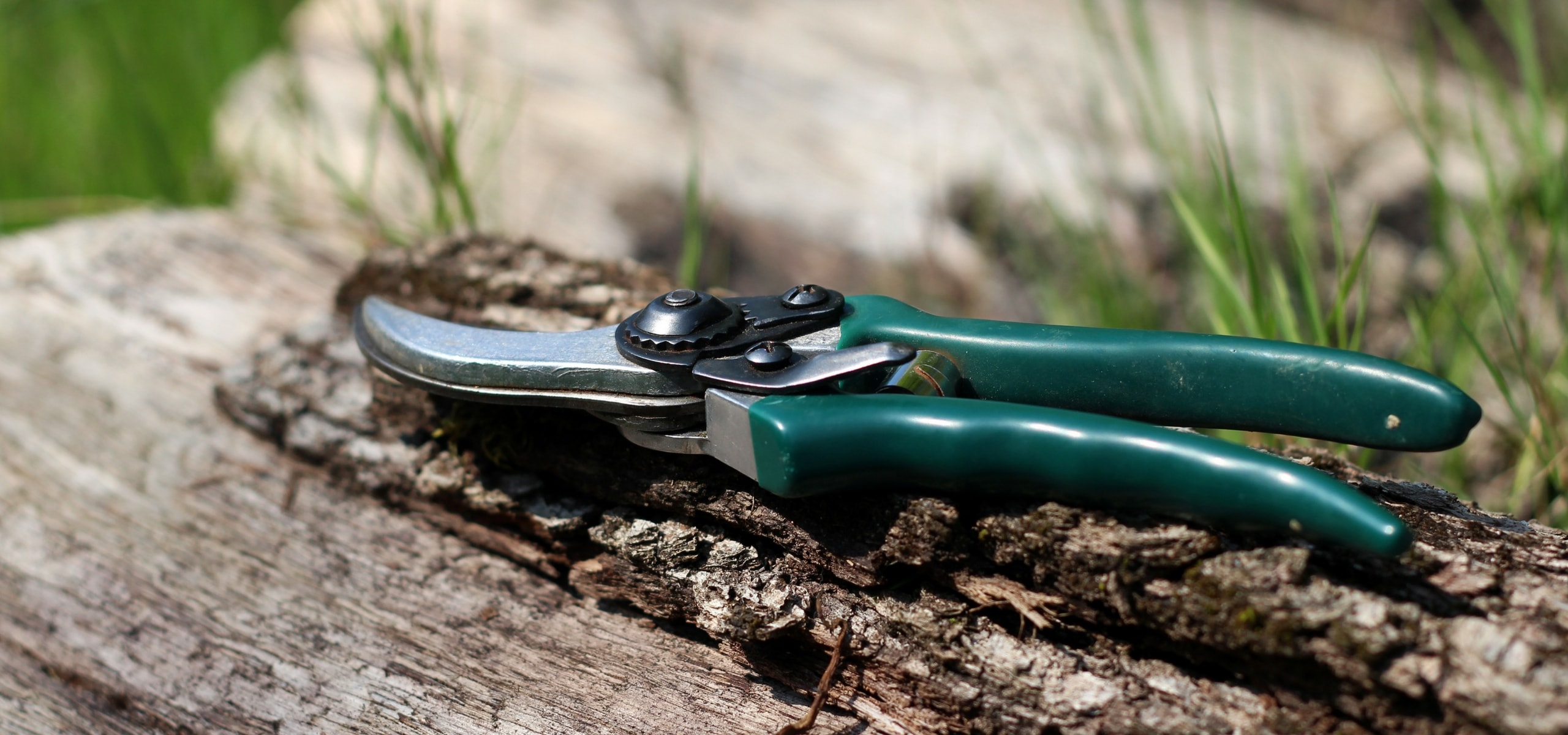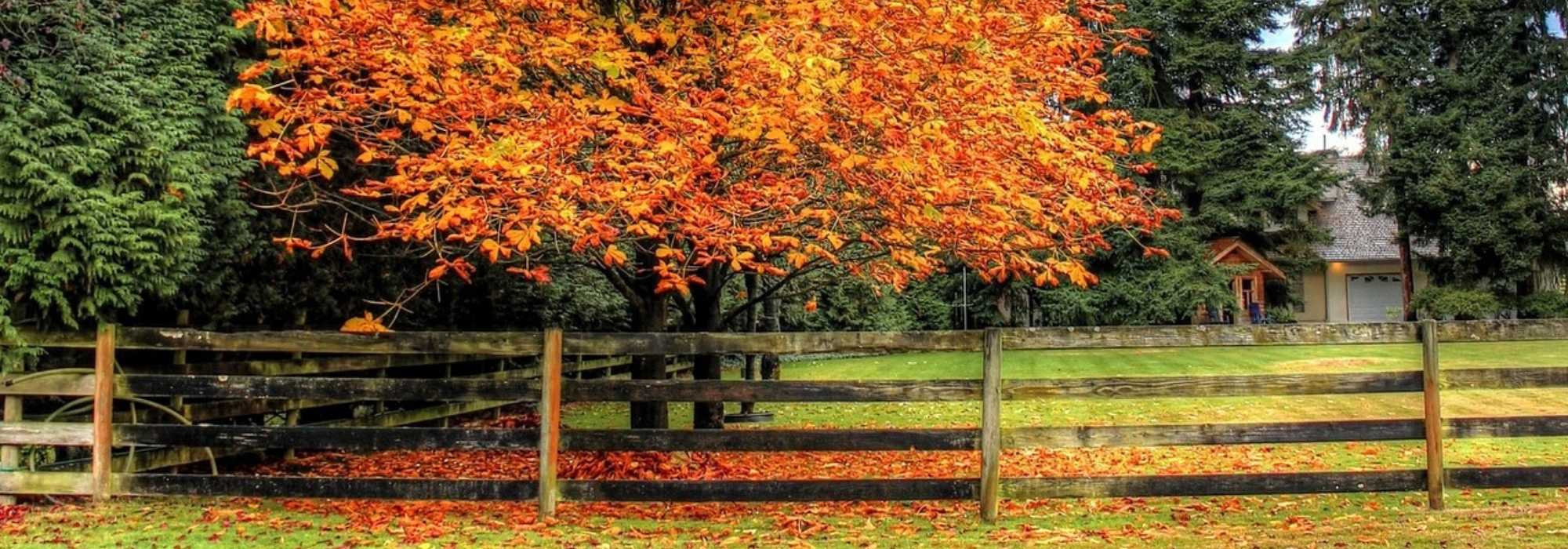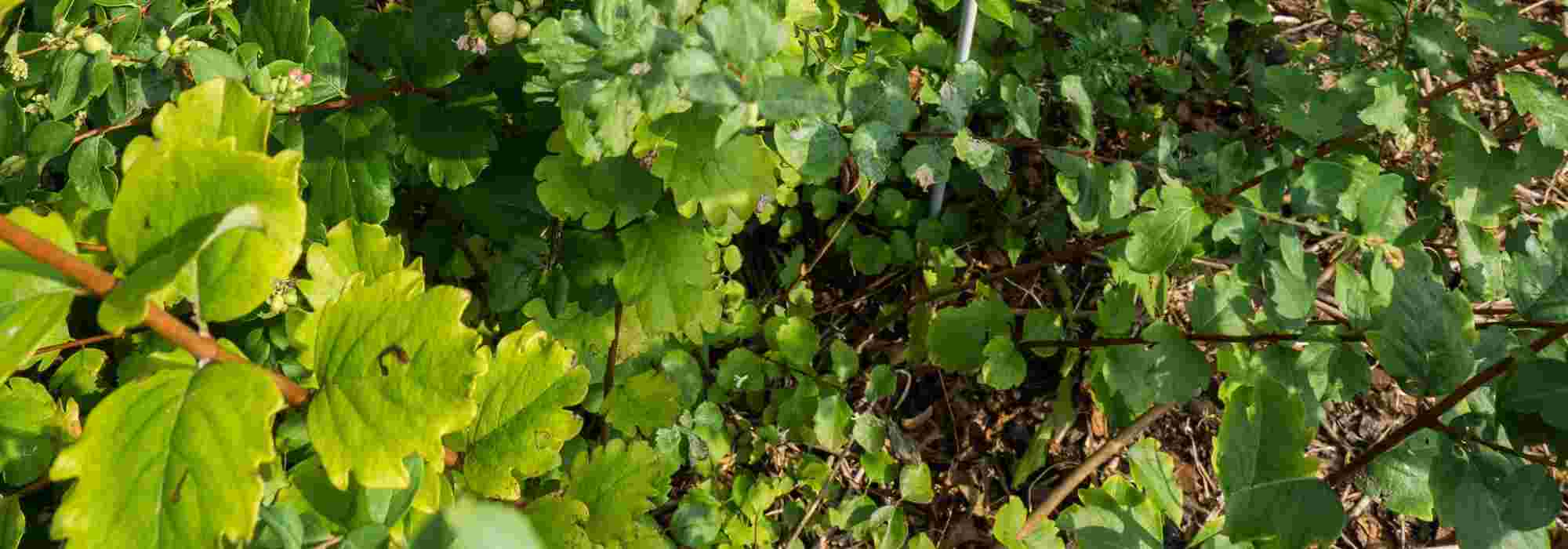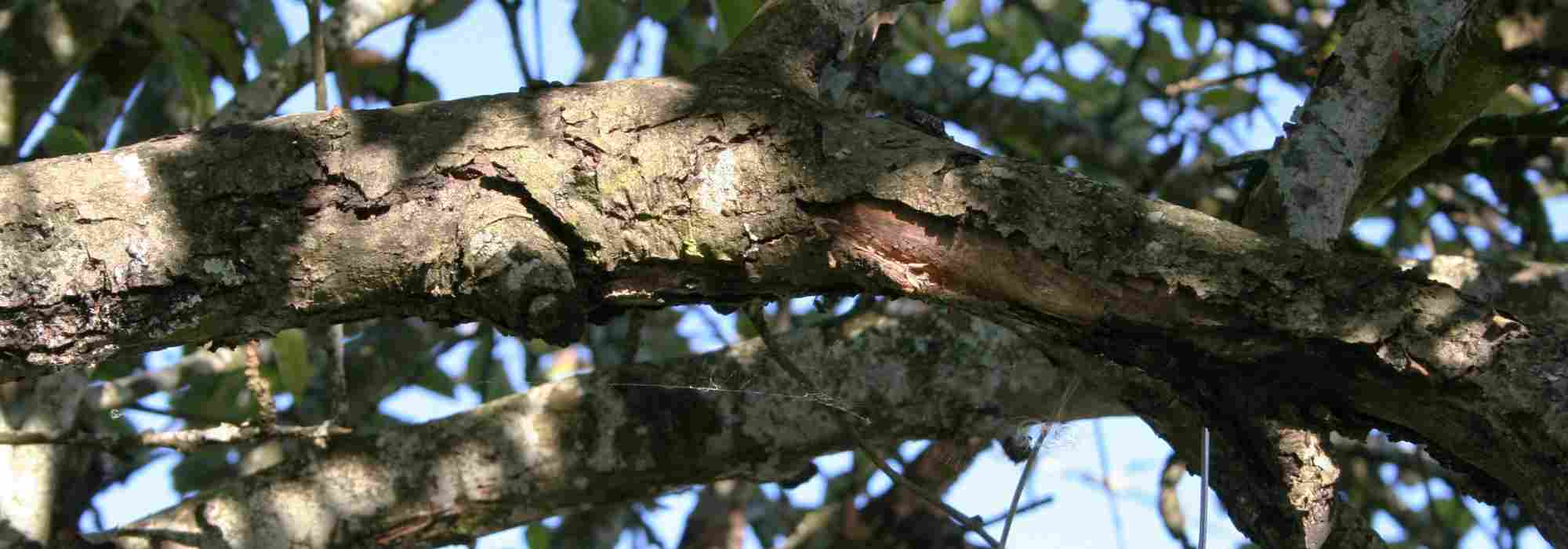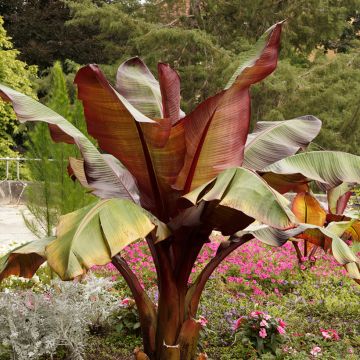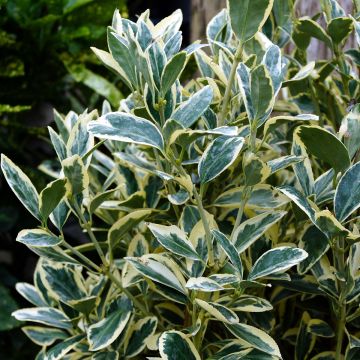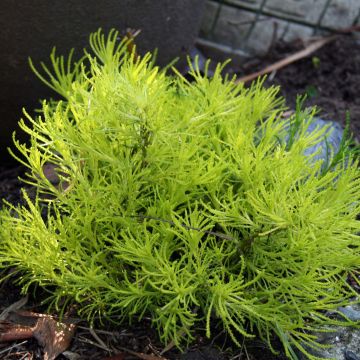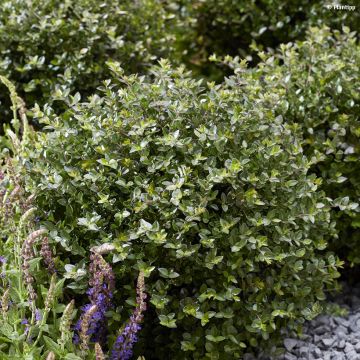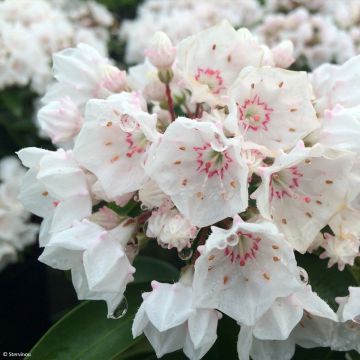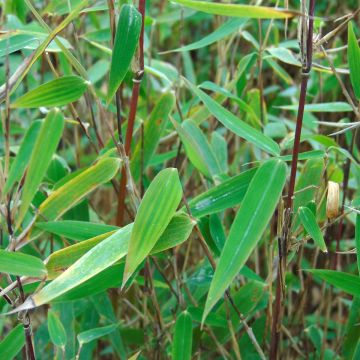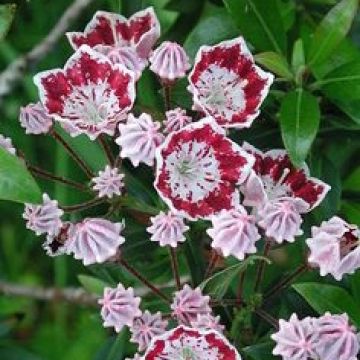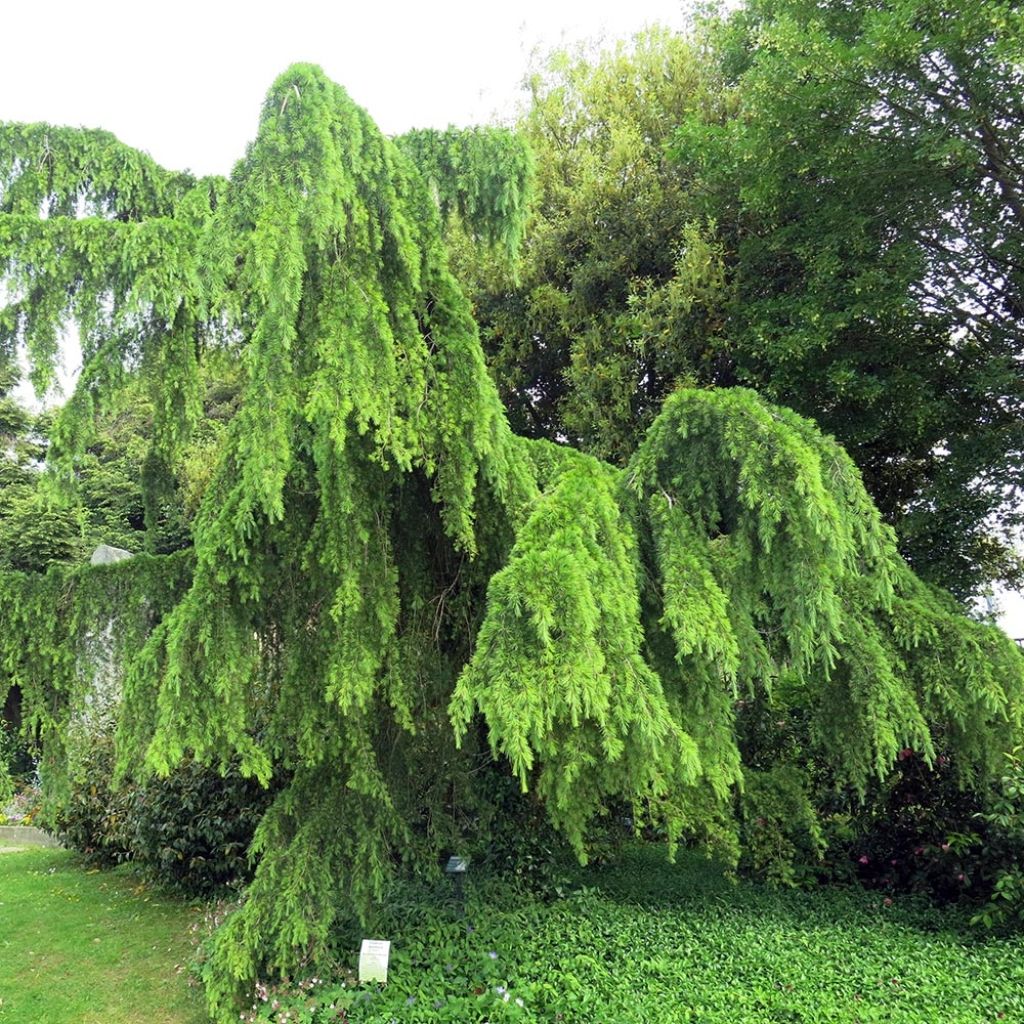

Cedrus deodara Pendula - Himalayan Cedar
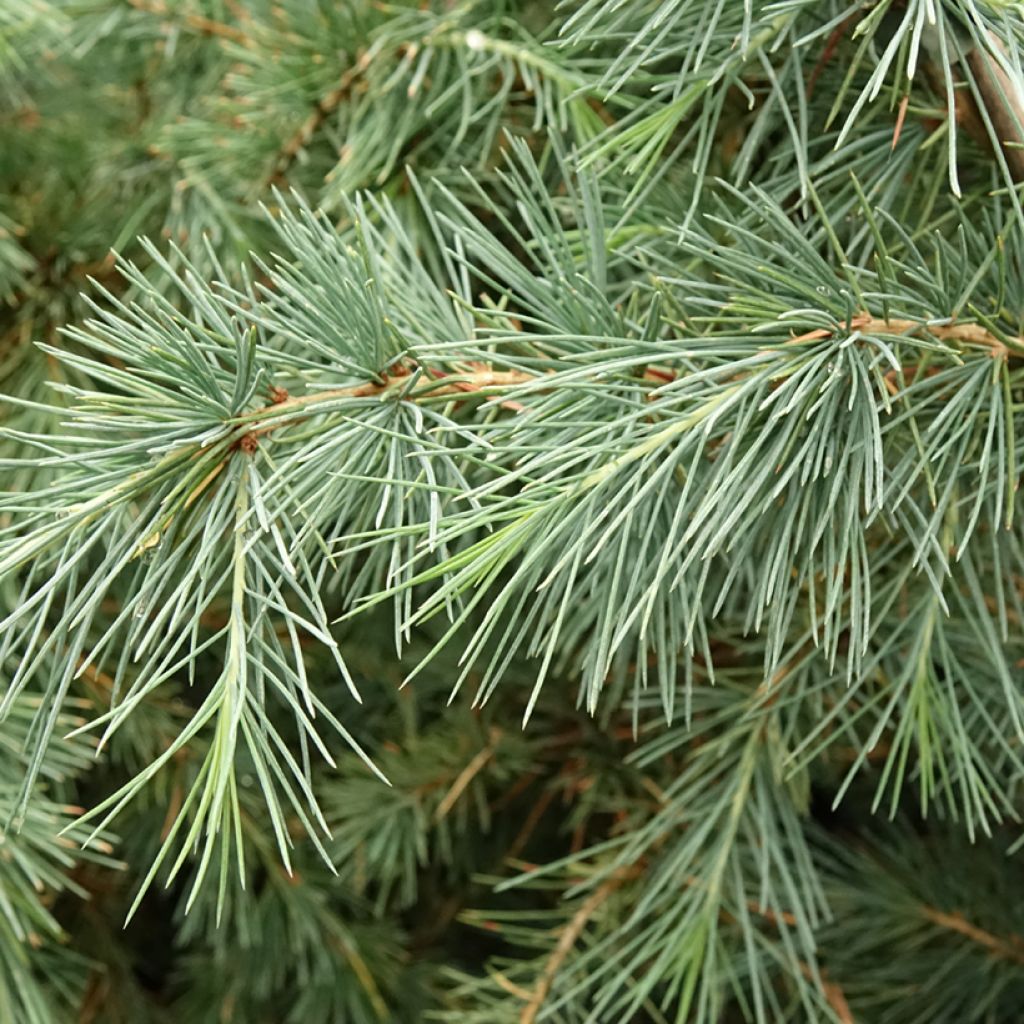

Cedrus deodara Pendula - Himalayan Cedar
Cedrus deodara Pendula - Himalayan Cedar
Cedrus deodara Pendula
Deodar Cedar, Himalayan Cedar
Special offer!
Receive a €20 voucher for any order over €90 (excluding delivery costs, credit notes, and plastic-free options)!
1- Add your favorite plants to your cart.
2- Once you have reached €90, confirm your order (you can even choose the delivery date!).
3- As soon as your order is shipped, you will receive an email containing your voucher code, valid for 3 months (90 days).
Your voucher is unique and can only be used once, for any order with a minimum value of €20, excluding delivery costs.
Can be combined with other current offers, non-divisible and non-refundable.
Home or relay delivery (depending on size and destination)
Schedule delivery date,
and select date in basket
This plant carries a 24 months recovery warranty
More information
We guarantee the quality of our plants for a full growing cycle, and will replace at our expense any plant that fails to recover under normal climatic and planting conditions.

Does this plant fit my garden?
Set up your Plantfit profile →
Description
The Cedrus deodara 'Pendula' is a weeping variety of Himalayan Cedar. This variety forms a small compact, irregular tree with a gracefully pendulous leading shoot and drooping branches along the trunk that require staking during their growth. Its evergreen foliage consists of delicate and flexible needle-like leaves that are fragrant and emerge light green before turning dark green. This distinctive conifer is best showcased when planted as a specimen in the middle of a short grass meadow or along a pathway, allowing enough space for its width. It prefers sheltered, sunny locations with well-draining and moist soil.
The Cedrus deodara, commonly known as the Himalayan Cedar, belongs to the pine family. It is native to the temperate high-altitude forests (between 1,500 and 3,000 metres (4,921 feet 4 inches and 9,842 feet 6 inches) above sea level) that cover the southern foothills of the Himalayas. Its range extends from Afghanistan to Tibet, India, Nepal, and Pakistan. It is a fine and fragrant species and is also considered a sacred Cedar of Hindu temples. While occasionally planted in parks, it is less common than its cousins, the blue Atlas Cedar and the iconic Cedar of Lebanon. This majestic conifer stands out with its unique features. Its unchanging conical shape is finer, lighter, and elegant right to the very top, never flattening at the crown. Its horizontally layered branches bear draping foliage of a light, soft, silky, and luminous green. It is a species that is sensitive to drought and thrives in deep, but not excessively dry or wet soil. Although it can tolerate temperatures down to -15°C (5 °F), frost can occasionally cause defoliation. It particularly enjoys mild and humid climates, such as oceanic climates, and prefers sheltered locations protected from winds and frost.
The 'Pendula' variety is a horticultural hybrid characterised by its weeping, compact habit and dark green foliage. It is a slow-growing small tree, reaching an average height of 5 metres (16 feet 5 inches) with a spread of about 7 metres (23 feet) after 20 to 50 years. Its growth is faster in deep and moist soil. It develops a short trunk covered with dark grey bark that cracks into large irregular scales. Its almost horizontal branches bear drooping secondary branches. The terminal shoots also hang down, giving it a slightly weeping appearance. Its persistent needles are grouped into clusters, measuring 3 to 4 cm (1.2 to 1.6 in) in length, and are flexible, light green when emerging, and then turn dark green. Female and male cones coexist on the same tree. They measure 7 to 12 cm (2.8 to 4.7 in) in length and 5 to 9 cm (2 to 3.5 in) in width, composed of fine scales, each housing a seed with a wing. These large seeds germinate easily after winter and exposure to cold temperatures.
The Cedrus deodara 'Pendula' is an exceptional variety with a compact and weeping habit, featuring cascading foliage on both the crown and branches. It is particularly stunning when planted as a solitary tree on a large short grass meadow or near a pond. Alternatively, it can be integrated into a large rockery with other rockery conifers and dwarf conifers of different colours and habits, along with heathers with intensely coloured flowers. Surprisingly, the sacred Cedar also adapts well to bonsai or topiary cultivation. While it requires no specific maintenance, the weeping variety needs to be staked to elevate and spread its branches to form an umbrella shape.
Cedrus deodara Pendula - Himalayan Cedar in pictures
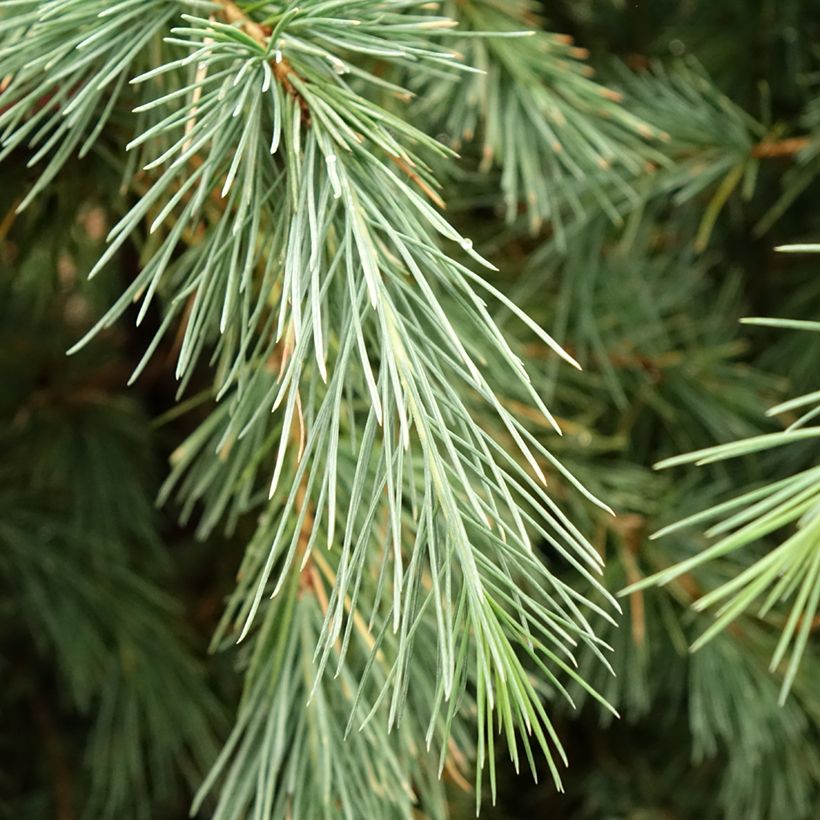

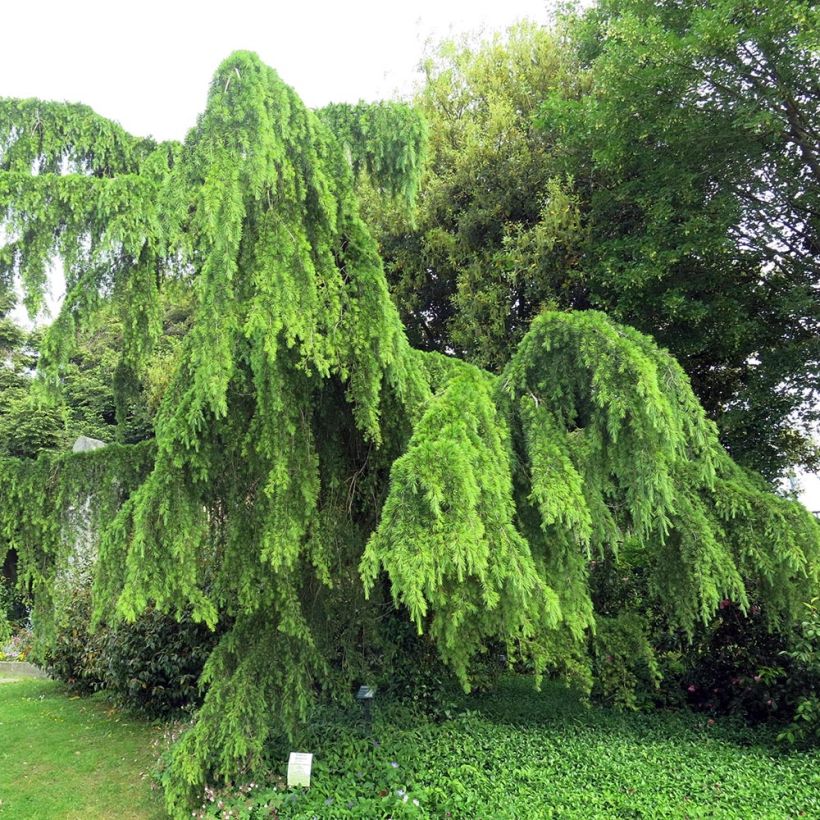

Plant habit
Foliage
Botanical data
Cedrus
deodara
Pendula
Pinaceae
Deodar Cedar, Himalayan Cedar
Cultivar or hybrid
Planting and care
The Himalayan Cedar prefers humid climates in summer and is perfectly resistant to cold. It can be planted from September to November and from February to June in ordinary, but deep soil. It is not very demanding in terms of soil type and can tolerate slightly acidic to slightly calcareous soil. Choose a very sunny and well-cleared location, and anticipate the future growth of this tree, which develops to a significant stature. Do not disturb it, as its root system needs to firmly anchor itself in the soil to withstand drought and wind. Soak the root ball well before planting. Stake your young edar, water it regularly to help it establish, especially in summer, during the first 2 or 3 years. Apply an organic supplement when planting (crushed horn or bonemeal...). Optionally, apply a special conifer fertiliser every year in April and hoe the soil in summer. Pruning is not necessary, except to shape the tree or remove dead branches at the base of the trunk as it grows.
Planting period
Intended location
Care
Planting & care advice
This item has not been reviewed yet - be the first to leave a review about it.
Similar products
Haven't found what you were looking for?
Hardiness is the lowest winter temperature a plant can endure without suffering serious damage or even dying. However, hardiness is affected by location (a sheltered area, such as a patio), protection (winter cover) and soil type (hardiness is improved by well-drained soil).

Photo Sharing Terms & Conditions
In order to encourage gardeners to interact and share their experiences, Promesse de fleurs offers various media enabling content to be uploaded onto its Site - in particular via the ‘Photo sharing’ module.
The User agrees to refrain from:
- Posting any content that is illegal, prejudicial, insulting, racist, inciteful to hatred, revisionist, contrary to public decency, that infringes on privacy or on the privacy rights of third parties, in particular the publicity rights of persons and goods, intellectual property rights, or the right to privacy.
- Submitting content on behalf of a third party;
- Impersonate the identity of a third party and/or publish any personal information about a third party;
In general, the User undertakes to refrain from any unethical behaviour.
All Content (in particular text, comments, files, images, photos, videos, creative works, etc.), which may be subject to property or intellectual property rights, image or other private rights, shall remain the property of the User, subject to the limited rights granted by the terms of the licence granted by Promesse de fleurs as stated below. Users are at liberty to publish or not to publish such Content on the Site, notably via the ‘Photo Sharing’ facility, and accept that this Content shall be made public and freely accessible, notably on the Internet.
Users further acknowledge, undertake to have ,and guarantee that they hold all necessary rights and permissions to publish such material on the Site, in particular with regard to the legislation in force pertaining to any privacy, property, intellectual property, image, or contractual rights, or rights of any other nature. By publishing such Content on the Site, Users acknowledge accepting full liability as publishers of the Content within the meaning of the law, and grant Promesse de fleurs, free of charge, an inclusive, worldwide licence for the said Content for the entire duration of its publication, including all reproduction, representation, up/downloading, displaying, performing, transmission, and storage rights.
Users also grant permission for their name to be linked to the Content and accept that this link may not always be made available.
By engaging in posting material, Users consent to their Content becoming automatically accessible on the Internet, in particular on other sites and/or blogs and/or web pages of the Promesse de fleurs site, including in particular social pages and the Promesse de fleurs catalogue.
Users may secure the removal of entrusted content free of charge by issuing a simple request via our contact form.
The flowering period indicated on our website applies to countries and regions located in USDA zone 8 (France, the United Kingdom, Ireland, the Netherlands, etc.)
It will vary according to where you live:
- In zones 9 to 10 (Italy, Spain, Greece, etc.), flowering will occur about 2 to 4 weeks earlier.
- In zones 6 to 7 (Germany, Poland, Slovenia, and lower mountainous regions), flowering will be delayed by 2 to 3 weeks.
- In zone 5 (Central Europe, Scandinavia), blooming will be delayed by 3 to 5 weeks.
In temperate climates, pruning of spring-flowering shrubs (forsythia, spireas, etc.) should be done just after flowering.
Pruning of summer-flowering shrubs (Indian Lilac, Perovskia, etc.) can be done in winter or spring.
In cold regions as well as with frost-sensitive plants, avoid pruning too early when severe frosts may still occur.
The planting period indicated on our website applies to countries and regions located in USDA zone 8 (France, United Kingdom, Ireland, Netherlands).
It will vary according to where you live:
- In Mediterranean zones (Marseille, Madrid, Milan, etc.), autumn and winter are the best planting periods.
- In continental zones (Strasbourg, Munich, Vienna, etc.), delay planting by 2 to 3 weeks in spring and bring it forward by 2 to 4 weeks in autumn.
- In mountainous regions (the Alps, Pyrenees, Carpathians, etc.), it is best to plant in late spring (May-June) or late summer (August-September).
The harvesting period indicated on our website applies to countries and regions in USDA zone 8 (France, England, Ireland, the Netherlands).
In colder areas (Scandinavia, Poland, Austria...) fruit and vegetable harvests are likely to be delayed by 3-4 weeks.
In warmer areas (Italy, Spain, Greece, etc.), harvesting will probably take place earlier, depending on weather conditions.
The sowing periods indicated on our website apply to countries and regions within USDA Zone 8 (France, UK, Ireland, Netherlands).
In colder areas (Scandinavia, Poland, Austria...), delay any outdoor sowing by 3-4 weeks, or sow under glass.
In warmer climes (Italy, Spain, Greece, etc.), bring outdoor sowing forward by a few weeks.






























